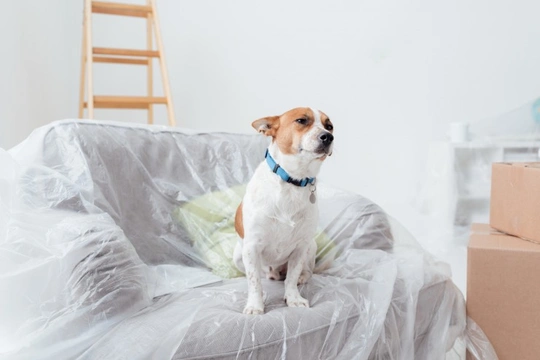
How to handle and manage your dog if you’re having work done on your house
Having work carried out on your house – whether that be building a conservatory, converting an attic, adding an extension or simply updating your décor – can be quite stressful for the people whose home it is, but it can also be stressful for your dog!
If you are planning to have work carried out on your home or even if you intend to do the work yourself, it is important to plan ahead with your dog in mind, unless you intend to place your dog in kennels or take the family and the dog away for the duration in order to stay out of the way!
There are a lot of things to bear in mind when it comes to your dog’s care while changes are going on at home, both to keep your dog happy and to ensure that they are safe. In this article, we will look at some of the factors to consider, and what you need to do to handle and manage your dog safely whilst the work is carried out. Read on to learn more.
Access to areas undergoing work
The best approach when it comes to your dog and renovation works is to keep the two well apart! Even during times when the work is finished for the day or paused midway through, try to keep your dog not only away from the area in question, but entirely out of the room if possible.
If access doors will be removed during the work, invest in a baby gate that can be fitted into entrances to form a barrier for your dog, and close off the area of the house in question as much as possible.
If you do need to take your dog through the work area – perhaps to get to the front door to take them out – check the area first, remove any hazards, and make sure anyone working turns off loud tools and is aware that you will be coming through.
Environmental hazards
Some types of renovations can produce hazards that can pose a risk to the health of both your dog and yourself. If the work involves asbestos removal or if asbestos is found, you and the family will need to keep well out of the way, and even the removal of fibreglass insulation can shed particles that can harm and irritate the skin.
Mould and fungal spores from damp areas may also be released during intensive work, which can lead to allergy-like symptoms in both dogs and people, so find out about any potential risks ahead of time, and be vigilant about keeping your dog well away from anything risky.
Dangerous products and places
Renovating or performing maintenance on a home can be a fairly messy business, with tools and products left about the place in between tasks, or while in use. This means that a range of new potential hazards may be brought into your home or around your dog, including live electrical wires, substances such as paint thinners, sharp tools and abrasive or caustic products.
This is another good reason for keeping your dog well out of the way, and you should also ensure that anything dangerous or toxic is cleared away and stored appropriately when not in use, and that the workmen do not leave potential hazards unsupervised.
Workmen and strangers in your home
The presence of workmen and other strangers in your home can be very confusing for your dog, so before the work starts, make sure that your dog undergoes a supervised introduction to the team, and has a chance to get familiar with them.
However, when the work is underway, keep your dog away. Your dog should be able to recognise the workmen as people they have met and that are allowed into the home, but even workers that love dogs will not want to work and supervise or entertain your pet at the same time, and even if they do, this is a bad idea for many reasons.
Additionally, if for any reason the workmen will need to access your home when you are out or if they will be left at home with your dog but without the family, keep your dog contained to an area away from the workers.
Before you allow the team to let themselves in or carry on with work when you are not there, make sure that your dog accepts and recognises them – and be present in the background the first time they access your home on their own, to monitor your dog’s reactions. If your dog responds negatively or shows any signs of distress or defensive aggression, you will need to reconsider allowing the workers to let themselves in, just to be on the safe side.
Routine and consistency
Dogs thrive on routine, and find change and upheaval quite stressful. While a friendly, outgoing dog may find the works a novelty and love having new friends come to visit them for a while, you should do what you can to avoid disrupting your dog’s routine, feeding and walking them at the normal times as much as possible, and minimising the impact of the disruption as well as you can.



